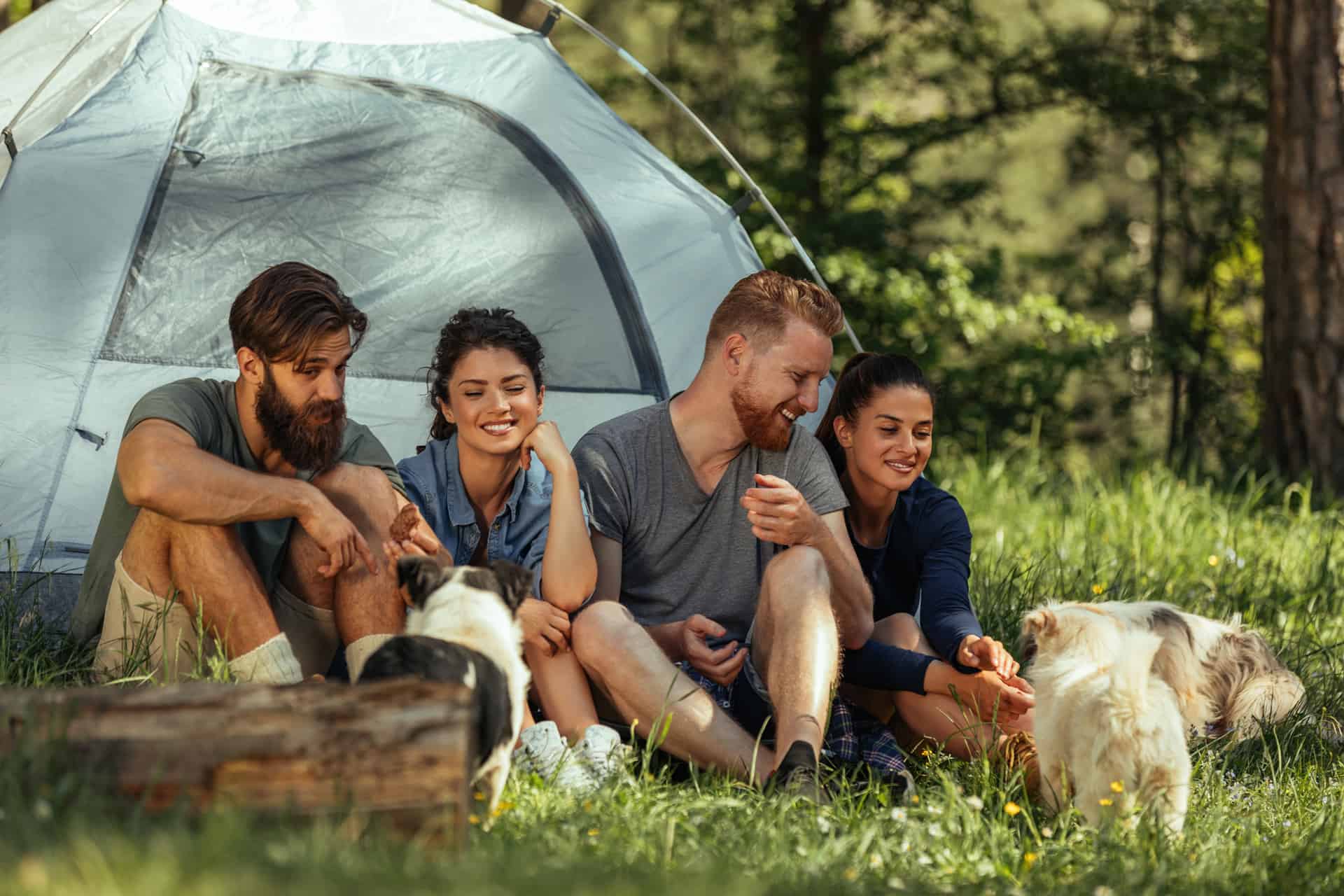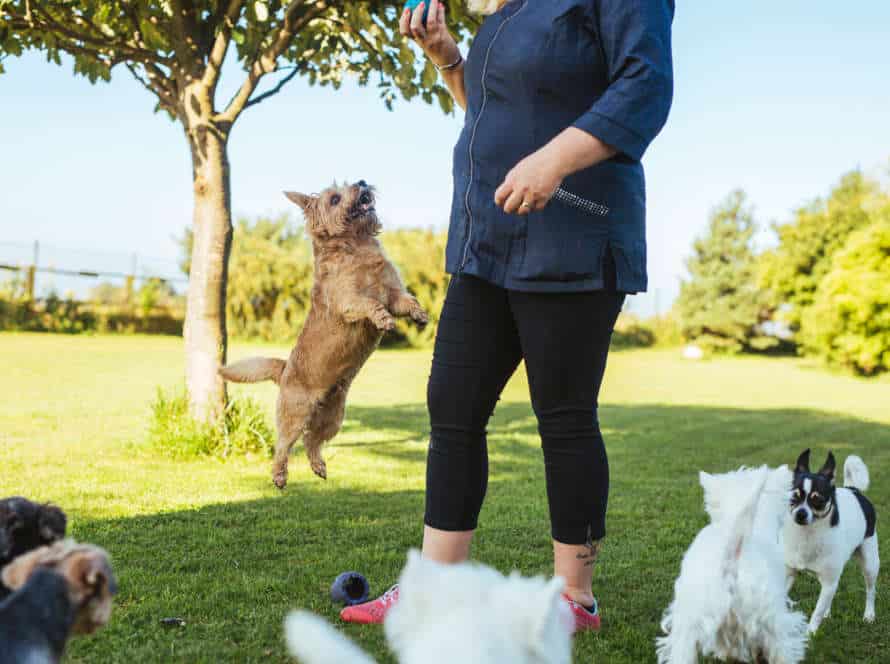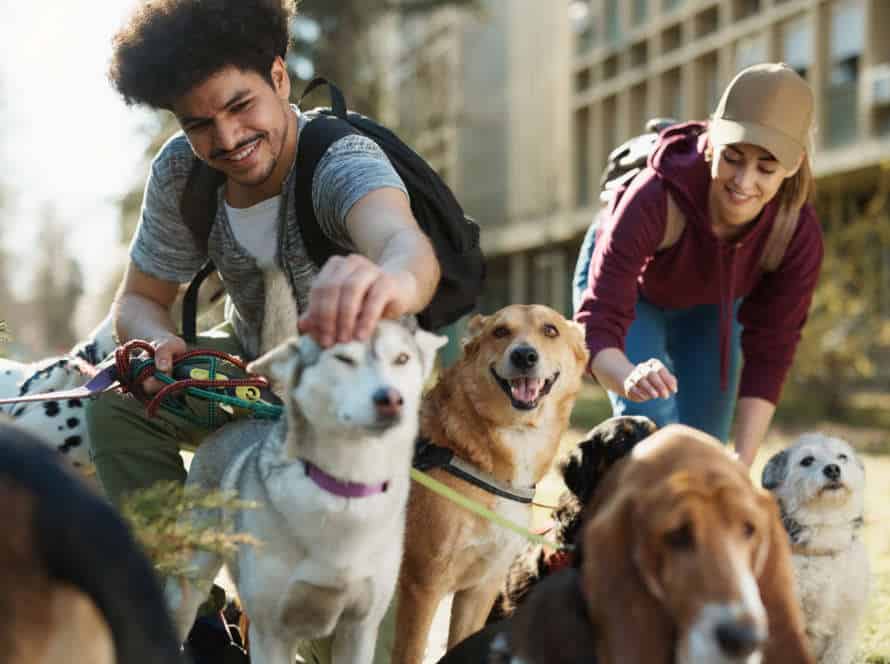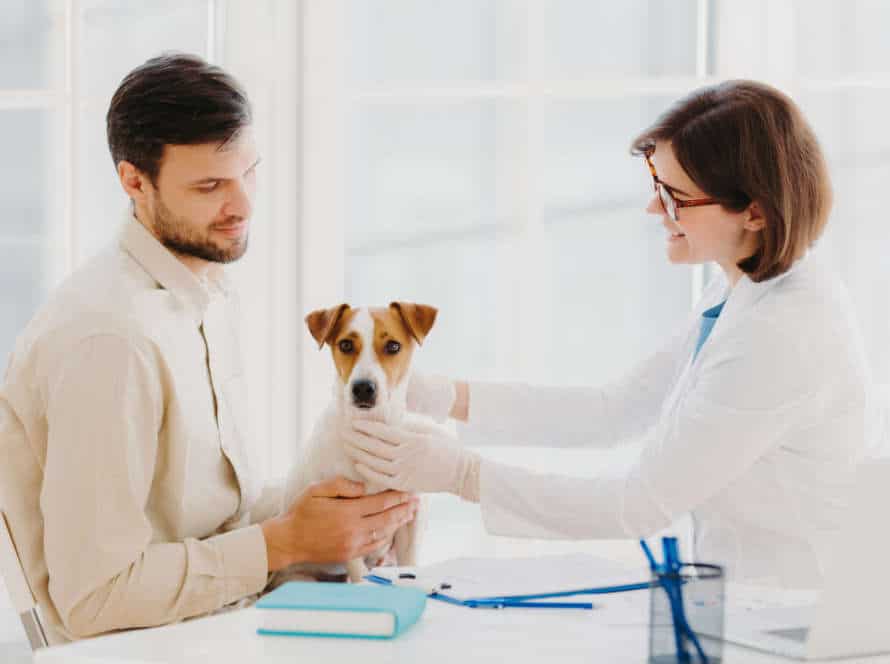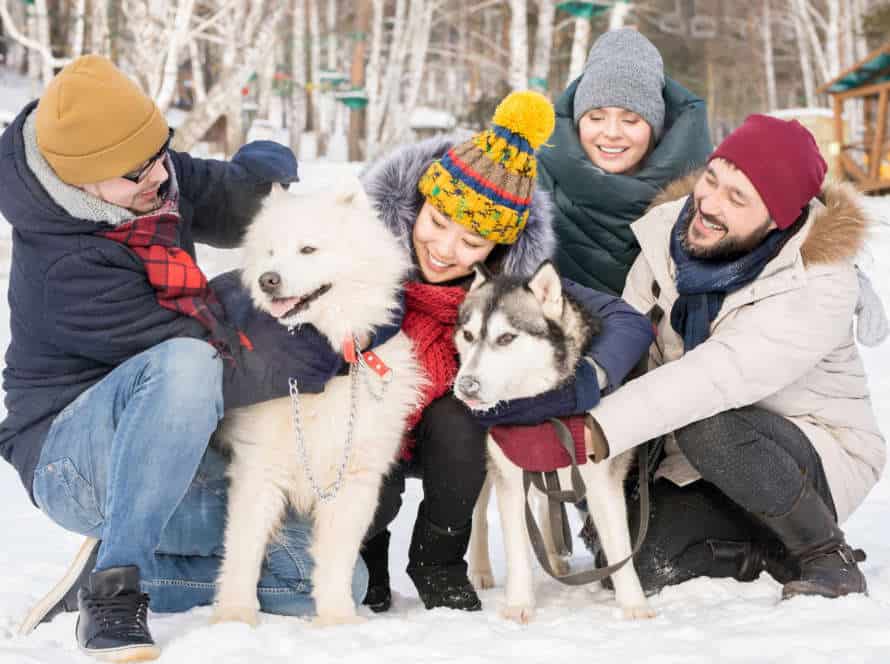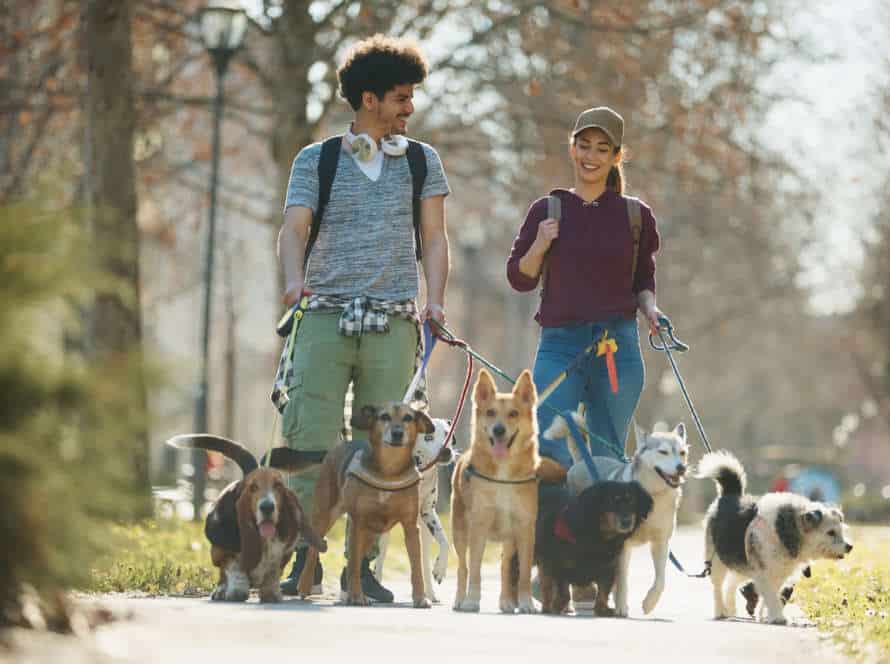How to Handle Fearful Dogs in Training
Dealing with scared pooches during training can be tricky. But, you can help your furry buddy surpass their anxieties and become a well-mannered companion. Here are some tips when managing scared dogs in training:
- Be persistent and chill – Your pup can sense your energy. So, staying tranquil and patient is essential. Abstain from responding severely to fearful behavior.
- Use positive reinforcement – Using positive reinforcement strategies such as treats and compliments can aid boost your dog’s assurance.
- Start off small – Begin with easy tasks that are less daunting before progressing to more difficult ones. The secret is to increase your dog’s confidence bit by bit.
- Acknowledge your dog’s triggers – Identify what prompts your dog’s fright and design plans to help them deal with it.
Always remember that all dogs are special, and some may require more time and patience to build their assurance. Through time, with regular training, your scared dog can overcome their fears and turn into the cheerful, obedient doggy you want them to be.
Understanding Fearful Behavior in Dogs
Dogs display fear with body language, such as backing away, crouching and barking.
To help your pup manage fear and build trust, it’s important to understand the cause. This article will explain why fearful behavior occurs and provide tips for helping your dog cope.
Common causes of fearful behavior in dogs
Fearful behavior in dogs is very common. It can be caused by many things. Some of the most common ones are:
- Poor socialization – Dogs that didn’t meet others may fear them.
- Traumatic events – Abuse or accidents can make dogs scared.
- Separation anxiety – Dogs may become fearful when left alone.
- Health issues – Pain or health problems can make dogs scared too.
To address fearful behavior, it is important to find the cause. You can do this by gradually exposing the dog to the trigger in a safe and positive environment. In some cases, help from a professional dog trainer or behaviorist may be needed.
Signs and symptoms of fearful behavior
Fearful behavior in dogs can have various expressions. Knowing the signs and symptoms can help owners comprehend their pet and take necessary steps to manage it during training.
Signs of fear in dogs are:
- Quivering or quaking
- Crouching or concealing
- Barking or snarling
- Excessive salivating
- Tucking tail or keeping it between legs
- Pacing or uneasiness
- Ears flattened against head
- Evading eye contact
Owners who spot these traits should be patient and not use punishment-based training. Positive reinforcement, like using treats to reward good behavior, can be more advantageous in training a fearful dog. Creating a secure environment for the anxious pooch can also help decrease the anxious behavior. Tip: Consulting a professional canine trainer or behaviour specialist can enable owners to set up a personalised training plan for their scared dog.
How fear can affect a dog’s ability to learn
Fear is a normal emotion in dogs. But, it can stop them from learning during training. When scared or anxious, they can’t focus. They may also show bad behaviors like aggression, barking, or hiding.
To help the dog learn, it’s important to find out why it is fearful. Use a patient and positive approach to training. Also, create a safe and comfortable training environment. A professional trainer or behaviorist can be useful.
If your dog is scared, act quickly. With love, patience and good training techniques, even the most scared dog can learn. They can become a confident, well-behaved pet.
Techniques for Handling Fearful Dogs
Training a fearful pup can be tricky. There are strategies to assist them in learning to trust and obey. Knowing their behavior is key! Use gentle, positive reinforcement techniques. Here are a few to handle scared dogs in training:
Building trust with your dog through positive reinforcement
Positive reinforcement is a great technique to achieve a strong relationship with your pup. Instead of punishing bad behavior, reward good behavior! Here are some ways to build trust with your furry friend:
- Give treats: When your dog does something good, reward it with treats and praise. This will make them understand that good behavior has its benefits.
- Playtime: Playing is a great way to bond and build trust. So, have a blast with your companion.
- Stay consistent: Rules and boundaries should stay the same. This way, your dog knows what to expect from you.
- Have patience: Building trust takes time, patience and commitment. Learning takes time so be patient with your pup.
Remember, positive reinforcement works best when it comes to building trust. So, reward good behavior with treats and praise. Be patient, and soon you will have a happy and obedient doggo!
Desensitization and counter-conditioning techniques
Desensitization and counter-conditioning can help with fearful dogs in training. Desensitization means exposing the dog to the thing that scares them. But do it slowly at first. Increase the intensity over time until the dog isn’t scared anymore. Use food treats or toys to make it a positive experience.
Counter-conditioning changes the dog’s emotional response. Give treats or affection whenever the trigger appears.
Be patient and consistent. Don’t rush it. Avoid punishment. If needed, get professional help. That way, you can handle the fear successfully.
Gradual exposure therapy for fearful dogs
Gradual exposure therapy is a way to train fearful doggos and help ’em get over their worries.
Here’s the how-to:
- Start by showing your dog something low-key scary, like a recording of a thunderstorm or someone wearing a hat.
- Reward them with treats, kind words, and petting when they’re chill.
- Over a few weeks, slowly make it scarier.
- Give ’em rewards for doing well and lower their exposure to the trigger if they get too anxious.
- Be consistent and patient and your pup’ll learn to conquer their fears and become more confident and adjusted!
Choosing the Right Training Method for Your Fearful Dog
Training a fearful pup? It’s a challenge! To help your pup adjust, select the best method. Positive reinforcement, clicker training, and desensitization are three options. How to choose the best one? Consider your pup’s individual needs.
Positive reinforcement training vs. punishment-based training
Positive reinforcement training is a great way to train your fearful pup. It works by rewarding good behavior and focusing on the positive. Punishment-based training, however, can do more harm than good. This includes scolding, yelling, or even physical punishment. This can cause fear, anxiety, and aggression.
Positive reinforcement is not only better for your pup, but it also helps build a trusting relationship between you two. Plus, it results in faster learning, better retention, and a happier pup.
Pro tip: Make positive reinforcement training even better by using treats your pup loves. Think cheese or cooked chicken!
Finding a professional dog trainer who understands fearful behavior
If you’re a pup parent to a fearful doggo, you need to find a skilled dog trainer. Here’s how:
- Look for one who uses positive reinforcement, not punishment.
- Ask if they have experience with anxious dogs and if they’ve had special training in this area.
- Request references from past clients who had fearful dogs.
- Schedule a meeting to discuss their training philosophy and how they’ll work with your pup.
Remember, it’s essential to pick a trainer who is understanding and patient. This ensures your dog gets the best care and training they deserve.
Factors to consider when deciding which training method to use
When teaching a fearful pup, it’s important to pick the right method. It depends on factors such as their personality, behavior, learning style, and how bad the fear is. Here are things to consider:
- Positive Reinforcement: Use rewards, praises, and treats to praise good deeds and correct bad ones.
- Gradual Exposure: Slowly showing them their fear triggers can help them get used to it and reduce their fear.
- Professional Help: If the fear is very bad or dangerous, get help from experts to keep your pup and others safe.
- Consistency: Make sure to use the same method regularly and that everyone in the family is on the same page.
- Patience: Dogs learn at different speeds, so don’t punish – reward them to motivate them while they’re learning.
Creating a Safe and Supportive Training Environment
Training scared doggies? Essentials!
Create a secure and helpful atmosphere. Having the correct environment can make a big impact on success! To understand the troubles that come with training these pooches, and how to craft a setting that will make them feel safe–it’s important. Let’s learn how to make the perfect training environment for fearful fur-babies!
Designing a training plan that suits your dog’s specific needs and triggers
Designing a plan tailored to your pup’s needs and triggers is essential for your four-legged friend to feel secure and supported whilst training. Here’s how to create a safe and encouraging atmosphere for anxious dogs:
- Note your pooch’s body language and conduct to recognize their triggers and dodge anything that could excite them.
- Break training into smaller, achievable parts to build your dog’s assurance and assist them to succeed.
- Utilize positive reinforcement such as praising, rewarding, and giving treats to back up preferred behavior.
- Keep away from punishment-based approaches that could agitate your pup or harm your dog’s reliance on you.
- Be patient and persistent in your training technique, and be ready to change your plan according to your pup’s growth and needs.
Pro Tip: Take regular breaks during training to protect against overwhelming your pup and to fortify their trust in you as a teacher.
Ensuring your dog feels safe and supported during training sessions
Creating a secure and encouraging training atmosphere is vital for guaranteeing your pooch feels good, certain, and responsive during sessions. Here are some hints to help you:
- Pick a tranquil, agreeable, and recognizable area for training.
- Utilize positive reinforcements such as treats, toys, and compliments to motivate your pup.
- Dodge physical or verbal punishments which can bring about anxiety or animosity.
- Take breaks when necessary to diminish your pup’s pressure levels.
- Utilize basic and clear commands and limit any interruptions.
Recall, by making a safe and supportive environment, you’re helping your pup learn while reinforcing the bond.
Pro tip – Don’t be in a rush with training. A slow and steady approach, plus sympathy, is best.
Managing other stress factors in your dog’s environment
Training a fearful dog? It’s essential! Manage stress factors in their environment for safe and supportive training. Fearful dogs get easily overwhelmed, and their behavior can change. To plan and manage their environment for successful and positive training, understand their triggers and stressors.
Here are a few tips:
- Don’t expose your dog to triggers unnecessarily.
- Make a safe space for them to retreat when feeling overwhelmed.
- Keep training sessions short and fun, avoid overstimulating them.
- Use positive reinforcement techniques to build trust and confidence.
Managing stress factors in their environment creates a positive training experience. Your dog will overcome their fears and develop a stronger bond with you.
Practical Tips for Handling Fearful Dogs in Training
Tackling fear in a dog can be tough. But, with the proper strategies, you can help them to gain courage. Create a safe and predictable environment. Give rewards for good behavior. Use positive reinforcement. This article contains tips to help you with fearful dogs during training. Put them into practice!
Keeping training sessions short and frequent
When it comes to training fearful dogs, short and frequent sessions are best. Not long and infrequent ones. Here’s why:
- Fearful dogs get overwhelmed quickly. This can lead to more anxiety and less learning.
- Short sessions help keep them engaged and focused. Thus, they learn better.
- Frequent training also helps them get used to the tools, environment, and trainer. As they associate training with positive experiences, their confidence and anxiety grows less.
An ideal session for a fearful dog should last 5-15 minutes, twice a day. Patience, consistency, and gentleness are key. With this, you will reap the rewards of your labor.
Using high-value treats and rewards as motivation
High-value treats & rewards are a great way to encourage fearful pooches. When dealing with anxious dogs, use positive reinforcement techniques. Here are tips:
- Give treats that your pup gets excited over, like chicken & cheese.
- Keep training sessions short & positive with frequent breaks.
- Praise & reward your dog for any effort, big or small.
- Use a clicker or verbal marker to show when they’ve done something right, then give a treat or reward.
Over time, your pup will link training & handling to positive outcomes, making your furry friend more confident & happy. Pro tip: Patience, understanding, & lots of love is key when training fearful dogs. With the right techniques, you can help your pup overcome their fears & flourish!
Recognizing progress and celebrating small successes
Training scared pups can be tough and emotionally draining. Notice progress and celebrate small victories to keep both you and your pup motivated and cheery. Here are tips to celebrate small successes:
- Use verbal praise and supportive words to show your pup they’re doin’ well when they make progress.
- Reward with treats when good behavior and progress happens. Give treats immediately after the desired behavior to strengthen the connection between it and the treat.
- Take pauses and have fun with your pup during the training. Playtime and bonding activities help build trust and positive links to the training.
- Set achievable goals and cheer when they’re reached. Don’t forget to recognize the progress made to bigger goals too.
By noticing progress and celebrating small successes, you and your scared pup can have a positive, successful training experience together.
Frequently Asked Questions
Q: How do I know if my dog is fearful?
A: Signs of fear in dogs can include trembling, excessive panting, lowered body posture, hiding or cowering, and avoidance behaviors.
Q: How do I approach a fearful dog during training?
A: It’s important to approach a fearful dog slowly and calmly, avoiding sudden movements, loud noises, or direct eye contact. Give the dog space and allow them to approach you on their own terms.
Q: What training techniques work best for fearful dogs?
A: Positive reinforcement techniques, such as using treats or praise to reward good behavior, can be effective for helping a fearful dog gain confidence. It’s important to avoid punishing or scolding a fearful dog, as this can worsen their anxiety.
Q: What can I do to help my dog feel more comfortable during training?
A: Creating a calm and predictable training environment can help a fearful dog feel more secure. This can include using consistent commands, providing a comfortable training space, and avoiding distractions or stressful stimuli.
Q: How long does it typically take to train a fearful dog?
A: There is no set timeline for training a fearful dog, as each individual dog will have their own unique needs and challenges. With patience, consistency, and positive reinforcement, however, many fearful dogs can make significant progress over time.
Q: What should I do if my dog’s fearfulness persists despite training?
A: In some cases, a professional dog trainer or behaviorist may be needed to help address a dog’s fearfulness. It’s important to persist with training efforts and try different techniques until you find what works best for your dog’s needs.

